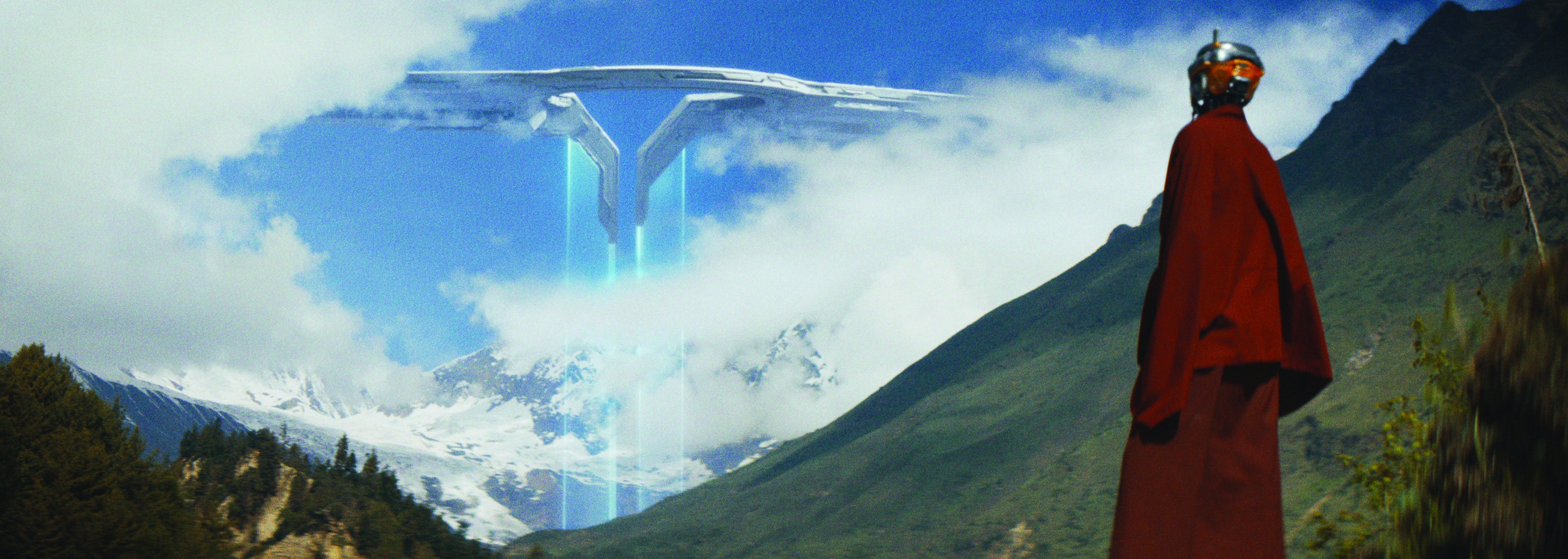
The Creator: Hope for the Future
Co-cinematographers Greig Fraser, ASC, ACS and Oren Soffer, along with director Gareth Edwards, detail their indie-style approach to a big-budget sci-fi epic.
Filmmaker Gareth Edwards’ mastery of production at both ends of the budget spectrum is fully realized in The Creator, a conceptual hybrid between his $500,000 debut (mostly improvised) feature, Monsters (AC Nov. 2010) — on which he completed the visual effects himself — and the Star Wars entry he directed, Rogue One (AC Feb. ’17), photographed by Greig Fraser, ASC, ACS. The project reunited the duo — and, in fact, they began discussing The Creator while working on their Star Wars film. “I was blown away by Monsters, and when Gareth talked about doing The Creator in a similar way, I was on board from the start,” Fraser says.
The story is set in the year 2070 during an all-out war between humans and artificial intelligence in the form of sentient androids and robots. When the U.S. military learns that AI has nearly finished building a weapon that could definitively turn the tide in its favor, they dispatch U.S. Army Sgt. Joshua Taylor (John David Washington) to take it out before it can be unleashed.
Director and Operator
Whatever the project, Fraser begins by “working hard to understand the director’s energy and get on the same wavelength with them,” he says. The cinematographer enjoyed a strong creative kinship with Edwards from the outset on Rogue One, but he says that early on during filming for The Creator, “Gareth was the most efficient at blocking shots — while using an actual camera, rather than a viewfinder. We seemed to have found Gareth's ‘happy place.’
“I knew, of course, that he’d operated his own camera on Monsters,” Fraser adds, “so I said, ‘Do you want to do this? The Alexa 65 with Ultra Panatars is actually a pretty heavy [rig], and I’d be happy to have a break!’ I wasn’t being lazy — even though I was suffering from some aches and pains so early in the shoot. I wanted to open the door and work with him in the best way possible. He was tentative about it, but I encouraged it and found that he is amazing with the camera. While he’s operating, he’s still thinking about the story. He’d find frames in the same way that I would — and he’d work with the light and find the shots in an incredible way, getting the right emotion out of the scene. He’s really good, so why wouldn’t I encourage that? It became our working style.”
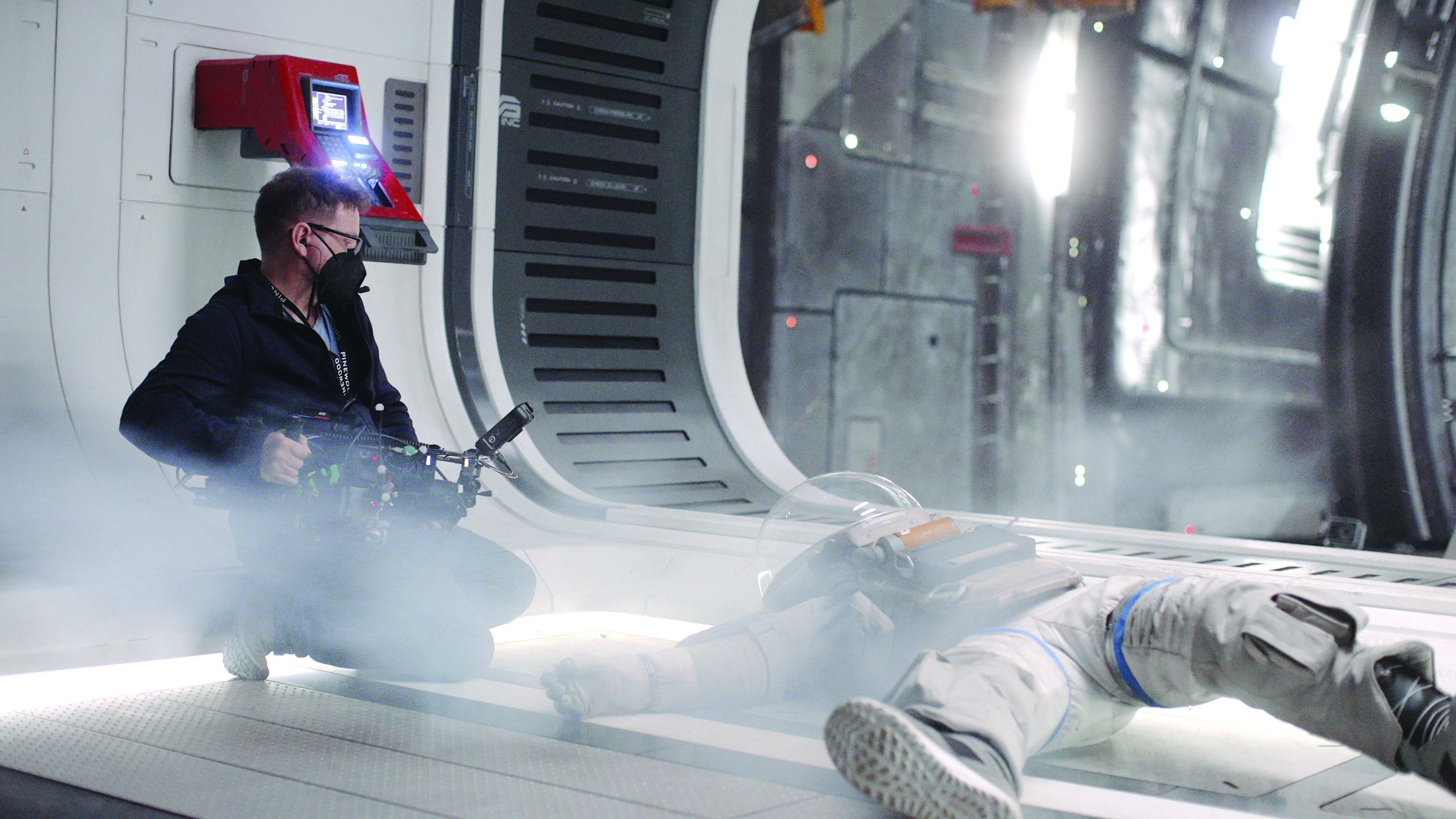
This arrangement was taken a step further on The Creator, with Edwards handling the majority of the camera operating and Fraser focusing on “creating an environment around Gareth so that he could just work and create. He wants to go into a location and be able to just react to the actors with a camera and shoot 360 degrees all the time. He shoots long takes of 20 to 30 minutes and just keeps rolling, working with the actors and finding the shots. Our production philosophy was based around this working methodology.”
Malick and Cameron
In his discussions with Fraser about the look and feel of The Creator, Edwards emphasized a desire for naturalism. “There’s a dance between something totally real and something beautiful, and I wanted this [film] to feel very fluid and organic,” Edwards says. “Greig and I talked about it a lot. I wanted an environment where I could discover the images and find the real truth in happy accidents. I didn’t want this to feel like a ‘movie movie.’ I wanted it to be a strange hybrid between Terrence Malick and James Cameron, or [to seem] as if Baraka was made as a sci-fi film. I wanted to make it feel wholly authentic, very documentary and cinema vérité.
“Greig and I are very similar aesthetically,” he adds. “It’s kind of like faking someone’s signature — if you’re good at it, it’s indistinguishable. I don’t know if I’m faking Greig’s signature or he’s faking mine, but we just have the same kind of style.”
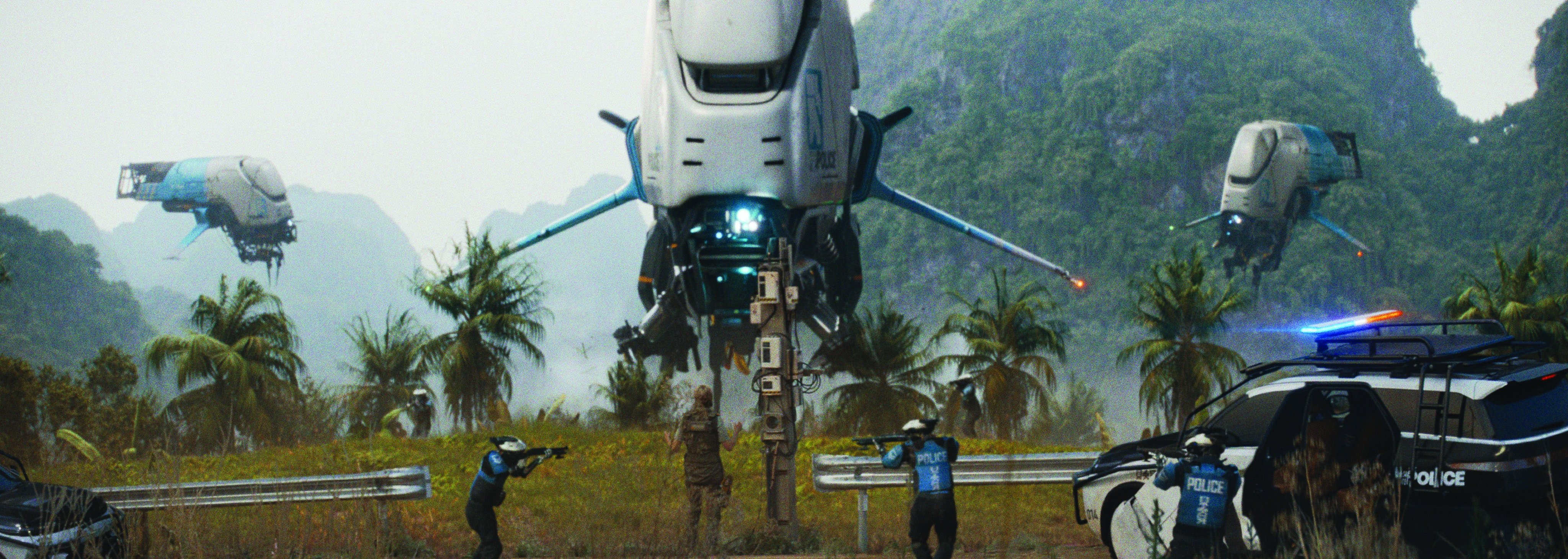
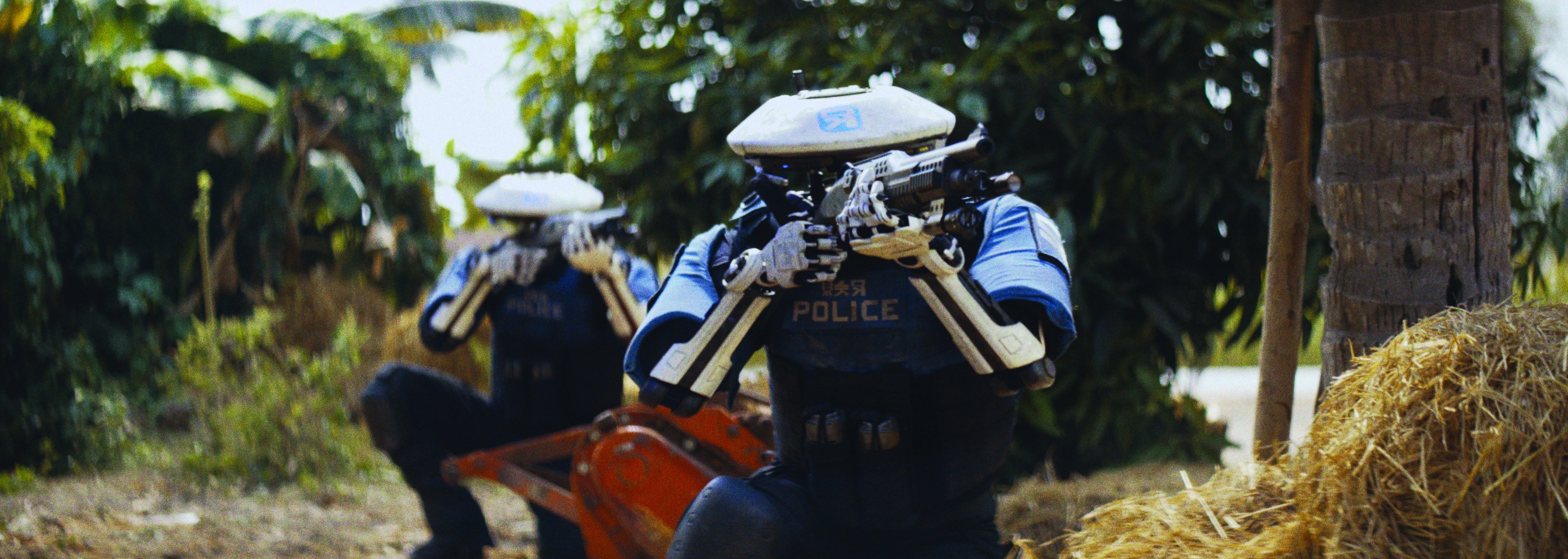
Last Looks
Another goal was to invert the standard approach to setting shots. “I don’t like being the first in the visual pipeline,” Edwards says. “On a normal production, the director sets the shot, then the cinematographer comes in and lights it, the art department refines the set to that framing, the actors move in that frame, and so forth. I’d rather have everyone come in and set the lighting and art, and then I come in with the camera and find that shot as the last one in the image pipeline. There’s always a better idea than what’s in your head initially. The more chaotic and random the moments are, the more you challenge your initial ideas and find something better.”
Paring It Down
“There’s so much we do in filmmaking that is ‘just in case’ because we can’t fully commit to not needing something,” Fraser says. “We have a dolly in the truck, just in case; we have a ton of grip and electric equipment, just in case. These choices also affect crew size. If we’re carrying a crane just in case, then we need two or three crane grips to support that. And the size of production just grows exponentially very quickly. Then, you get into a foreign country, and they have their own way of doing things that we don’t have any control over, so extra gear comes with extra personnel, and suddenly there are 10 more people on the crew for something you may or may not ever need or use. We eliminated all the ‘just in cases’ on The Creator, paring it down to the barest bones to get the job done. That, of course, takes a lot of planning — which was key.”
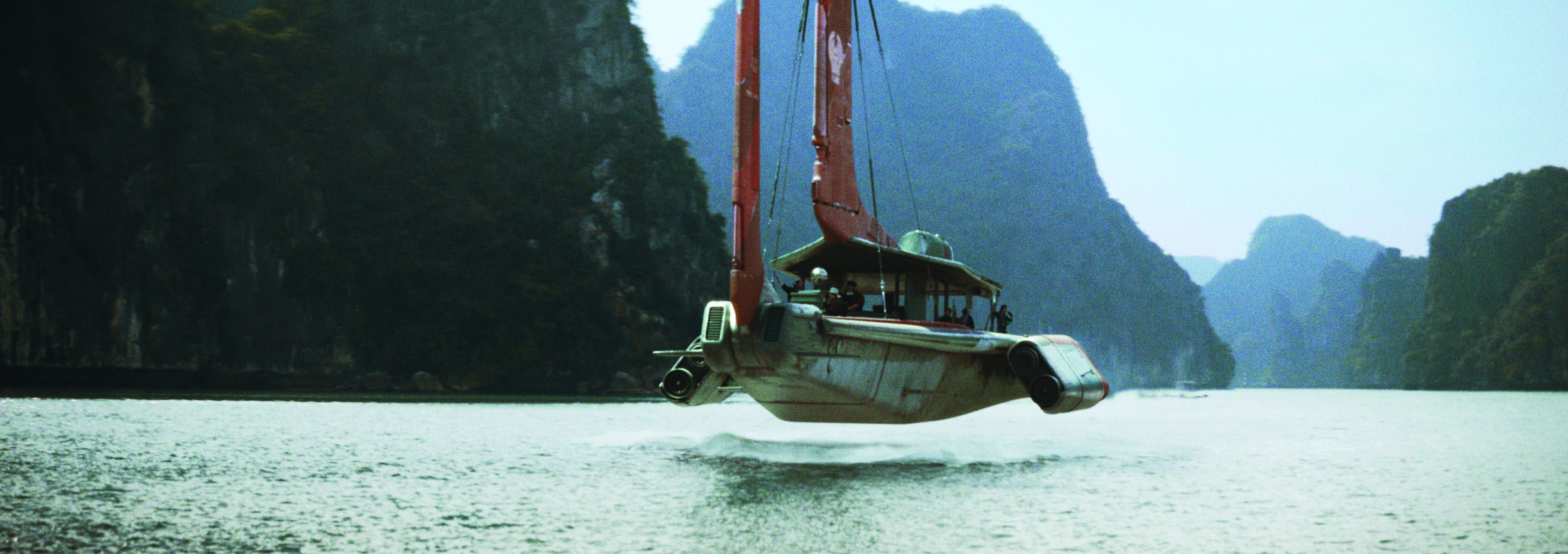
Two Cinematographers
Because Fraser had previously committed to shooting Dune 2 for Denis Villeneuve, he initially planned to handle 30-50 percent of principal photography on The Creator, and to set the look and tone, before turning the reins over to a co-cinematographer. He chose Oren Soffer, a young Israeli-American director of photography he’d worked with on several projects.
Fraser’s criteria were “a DP with great sensibilities who could also step back and let Gareth do his thing and support him in his vision,” he says — adding, “I told Oren there might be days when he wouldn’t talk to Gareth for five or six hours. I said, ‘If he’s off in his own bubble working with the actors and shooting, that’s a good thing.’”
Soffer, whose honors include a 2015 ASC Gordon Willis Heritage Award nomination, says, “The initial call from Greig was surreal. He laid out this crazy pitch: It was going to be documentary-style guerrilla filmmaking with minimal lighting, minimal crew and the director operating his own camera. It was intriguing, and also kind of scary, but how can you say no to that kind of opportunity?
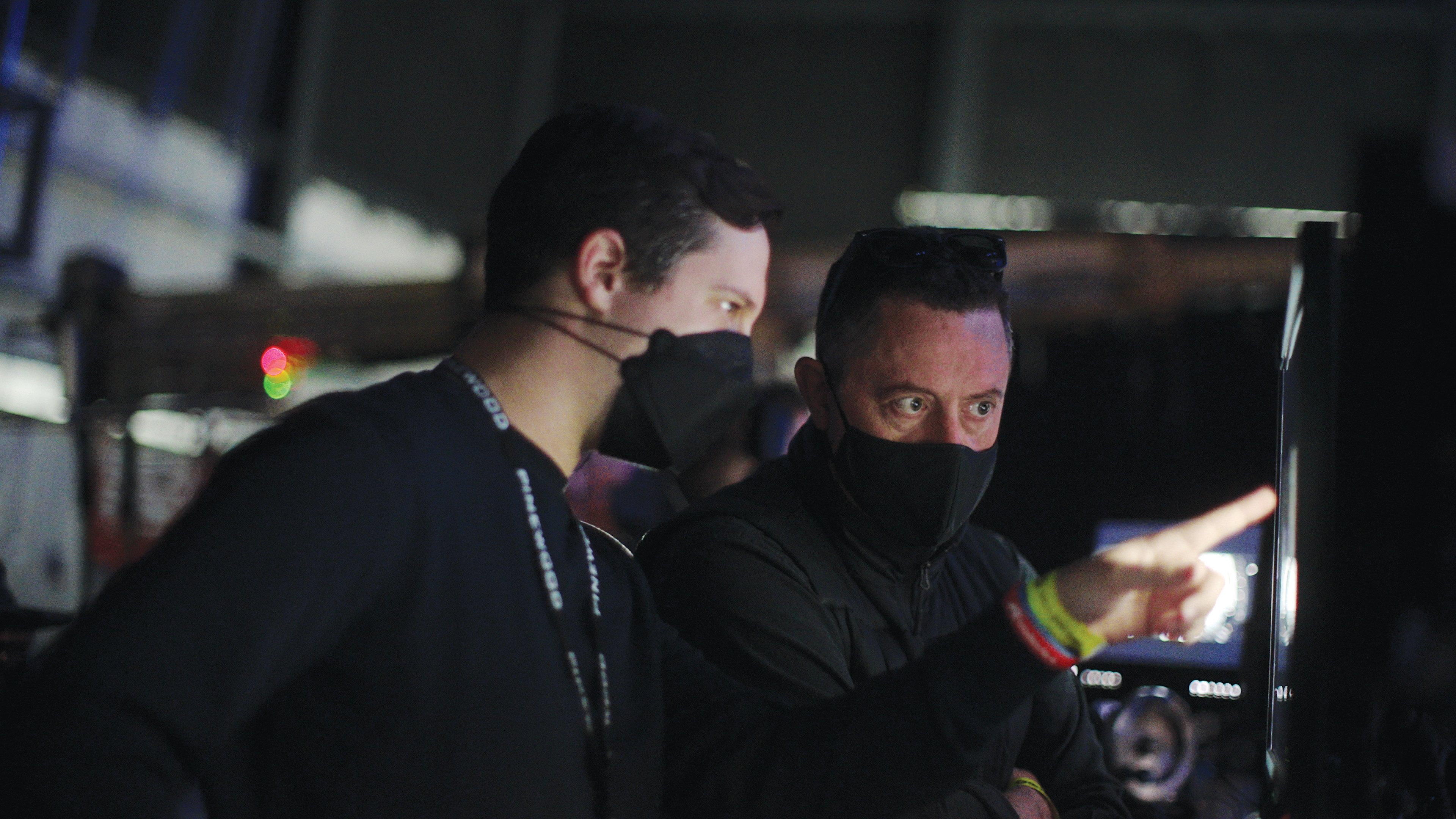
“The real key was the prep,” Soffer adds. “Gareth had been thinking about his film for years and had an incredibly clear vision. By the time I came on board, there were thousands of reference images, concept art and a test film that Gareth had shot to initially pitch the movie to the studio. It really defined what the look would be.”
As fate would have it, Covid-19 quarantine restrictions prevented Fraser from traveling in and out of Thailand to attend to his Dune 2 commitments in Hungary, so he couldn’t be in Thailand for the shoot. Therefore, Soffer commenced shooting with Edwards, and Fraser reviewed dailies virtually and connected with the pair daily.
Finding Moments
Soffer describes Edwards’ approach to shooting: “Gareth would block out the scene with the actors and then start shooting, typically with the gimbal, exploring the scene and discovering with the actors, finding moments and banking shots we would come back to later. Meanwhile, the gaffer, Pithai [Smithsuth], and I sat at a monitor as close to the set as possible, but removed enough that Gareth could easily look 360 degrees without seeing us.
“We had a fairly large and typical basecamp and video village for this film,” continues Soffer, “but that was always a significant distance away from the shooting area, and we’d really only see basecamp in the morning and night. There was no video village full of crew, mainly just the gaffer, myself and the focus puller, Krittabhat ‘Aey’ Khieolek. Each of Gareth’s takes would often last 25-30 minutes without cutting, and Pithai and I would watch and adjust the lighting wirelessly on the fly. I also had control over a variable ND filter with a Tilta Nucleus system on the lens so I could adjust exposure.”
Edwards had a microphone inside his face mask so he could communicate with his collaborators about what he would need next.
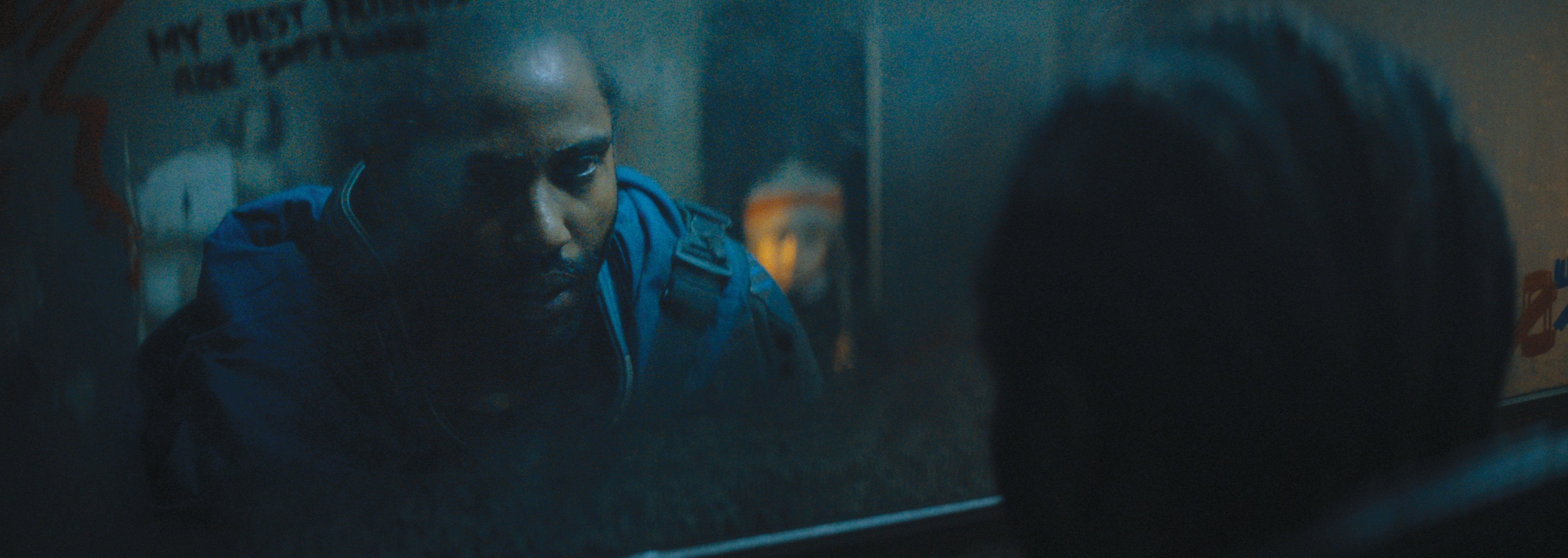
Like Painting a Room
Soffer says the improvisational feel of the camerawork in The Creator belies Edwards’ painstaking preparation. “Every location was meticulously scouted, and lighting was planned to provide a spontaneous shooting environment for Gareth,” he says. “We discussed shooting angles, finding the light, where we’d hide or augment existing lighting, and how we’d continue to adjust as he shot.”
“It’s a bit like painting a room — 80 percent of it is all in the prep,” Fraser adds. “You spend all this time moving furniture, taping the windows and covering the floor, and then you get to painting, and that part just kind of happens. That’s how we approach filmmaking.”
$4,000 Cameras
Shooting The Creator the way Edwards intended would have been almost inconceivable without the Sony ILME-FX3 mirrorless camera, according to Fraser. “We needed a camera that would give Gareth a small kit he could just fly around with, would be cost effective, and would be small enough that he could practically sleep with it,” the cinematographer says. “He needed to be able to shoot anywhere, mostly unnoticed.”
“We went to a lot of trade shows and looked at a lot of gear, but it wasn’t really until Sony came out with the FX3 that I said, ‘Okay, now we’ve got what we need,’” Fraser continues. “After I finished The Batman, I went off and did a commercial in Spain on the FX3, and it blew me away. The amount of sensitivity you can get from that camera and the image quality at 12,800 ISO are mind-blowing. It was the tool we needed.”
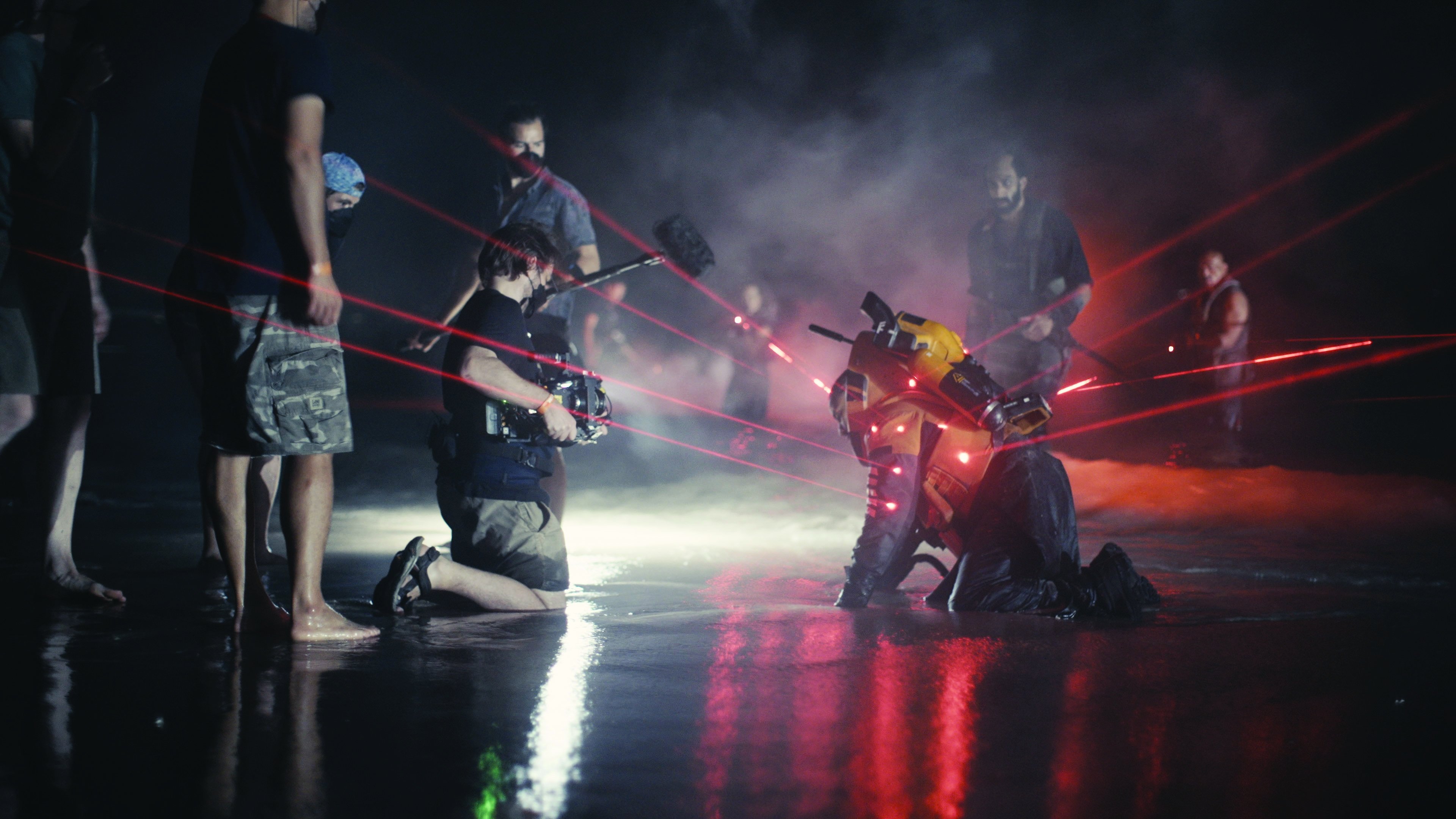
The production carried several FX3s, and four were rigged at all times: Edwards’ main camera was on a DJI Ronin RS2 handheld gimbal; another unit was rigged for a small Kessler Shuttle dolly that could also be rigged with a GF-Mini Jib; another was rigged to a Proaim Powermatic 17' scissor crane; and another was on a heavy-lift drone so the filmmakers could instantly switch shooting modes without slowing their pace. For occasional use, Soffer notes, “we also had an FX3 in handheld mode with standard DSLR handgrips.”
Drone Approach
For the drone work, the heavy-lift option was used if “we noticed the depth of field merited the use of the full-frame camera,” says Edwards. “Otherwise, we used a prosumer DJI Mavic 2.”
Soffer adds, “Gareth would go out on the weekend and shoot a lot of the smaller drone work himself, which is another benefit of the prosumer technology — you don’t need a whole crew to fly, and they’re a lot easier to use.”
A Simple Lens Package
Edwards, Fraser and Soffer decided to capture all but a few shots in The Creator with a Kowa Cine Prominar 75mm anamorphic, wide open at T2.8. A prototype Atlas Mercury 42mm anamorphic was used for tight spaces such as car interiors, and some Iron Glass-rehoused vintage Soviet spherical lenses — the MIR-24M 35mm, Helios 44-2 58mm, Jupiter-9 85mm and a Vivitar M42 200mm — were deployed for select shots.
“The 200mm was used for a couple shots like binocular POVs,” Soffer notes, “and Iron Glass fitted the Soviet lenses with cat’s-eye-shaped pupils so they better matched the anamorphic bokeh of the Kowa.”
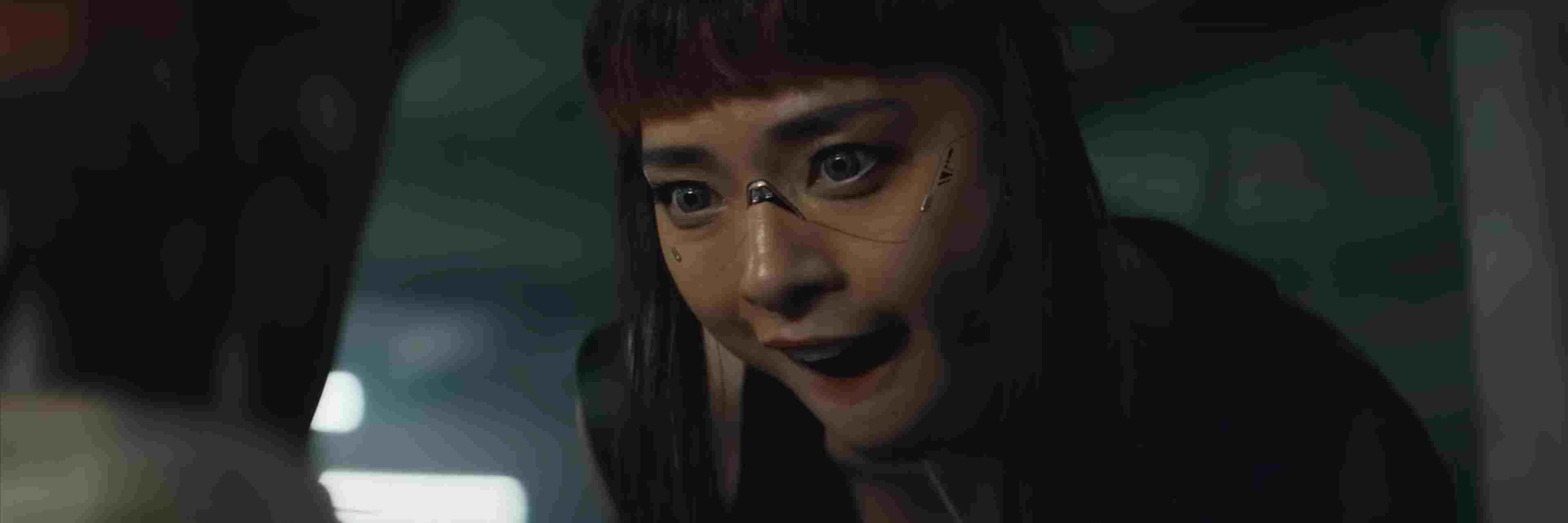
Lightweight Lighting
The FX3’s extraordinary sensitivity and the general production methodology allowed for smaller, lighter-weight and remote-operated LED fixtures such as the Aputure 1200d and 600x, along with Aputure Novas, Astera Titan and Helios tubes, Rosco DMG Dashes and LiteGear LiteMats. Soffer augmented these by tucking Aputure MC RGB fixtures into corners.
“But our get-out-of-jail-free-card, as we called it,” Soffer says, “was a Helios tube with a mini Chimera softbox on the end of a boom pole that was carried around by our best boy electric, Nancie Kang. We controlled this with our iPad dimmer-control board, and Nancie was always standing by with it to add a little shape or a pinch of light when needed. Because it was mobile, she could easily move around with Gareth and never get in the way. She strapped an iPhone to her arm to monitor [with QTake] what Gareth was shooting, so she knew where to go with the boom.
“One exciting thing about shooting at 12,800 ISO is that even a 600x Aputure can look like bright daylight coming through a window,” Soffer continues. “At 800 ISO, those units would never be bright enough to sell as daylight, but at 12,800, they packed quite a punch! We’d also use those with the spotlight adapter and gobo patterns to create daylight breakup.
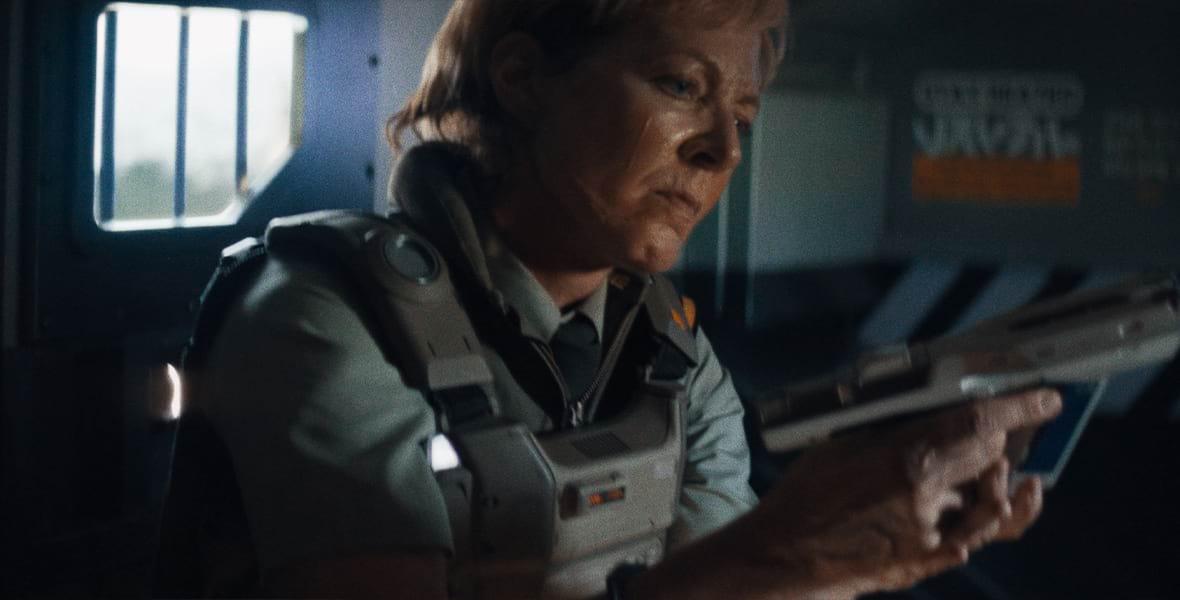
“Some locations had to be fully artificially lit, like the night exteriors during the lab raid and the ‘no-man’s-land’ sequence — and some [settings], such as the psychiatrist’s office, had to be fully built onstage and artificially lit,” Soffer continues. “But we always made sure to approach that lighting from a naturalistic standpoint: ‘How would this space be lit if it were a real location?’”
To augment the practical lighting found throughout Thailand, the filmmakers also carried a mix of fluorescents, mercury-vapor bulbs and household LED bulbs. Of the latter, Soffer says, “We just loved the look and found it hard to perfectly nail the color and really limited spectral ‘spike’ of those low-grade lights [using] LED movie lights.”
Support From All Quarters
Edwards’ unorthodox approach to The Creator was embraced by collaborators on every level. “It was amazing to have the support of the studio, but in order for this to work, we also had to have the unwavering support of the entire crew,” Fraser says. “The idea of making a studio film at this budget — with these actors, using unproven technology for such a large-scale production, and a scrappy guerrilla-style approach — was really crazy. But everyone got on board with it, and the results are quite extraordinary.”
Soffer says the experience inspired him to “question my aesthetic and priorities as a cinematographer. I think most DPs are quite precious and meticulous about imagery, and I had to really let that go on this one and trust the process, the director and the prep. In the end, it’s work we’re all incredibly proud of — and a production philosophy I hope to adopt more in the future.”
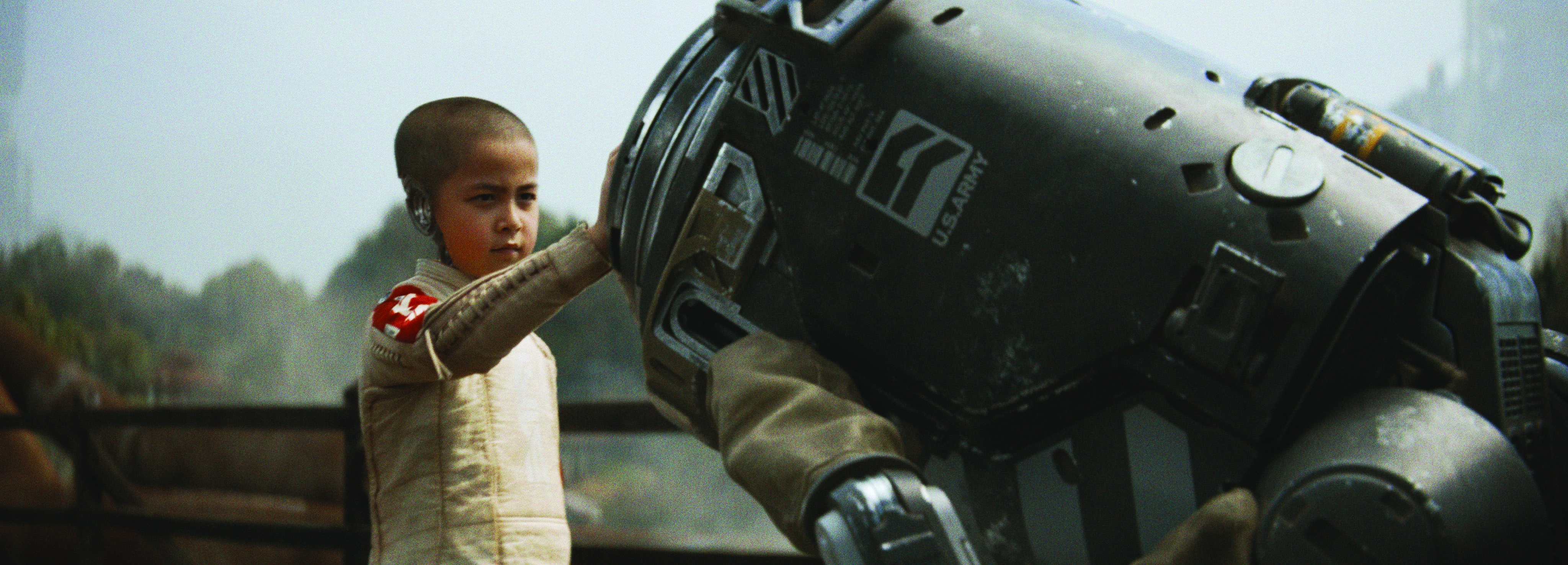
Tech Specs
2.76:1
Cameras | Sony ILME-FX3, PXW-FX9; DJI Mavic 2
Lenses | Kowa Cine Prominar anamorphic, Atlas Mercury
anamorphic, Iron Glass, Vivitar
Indie Approach on a Studio Budget
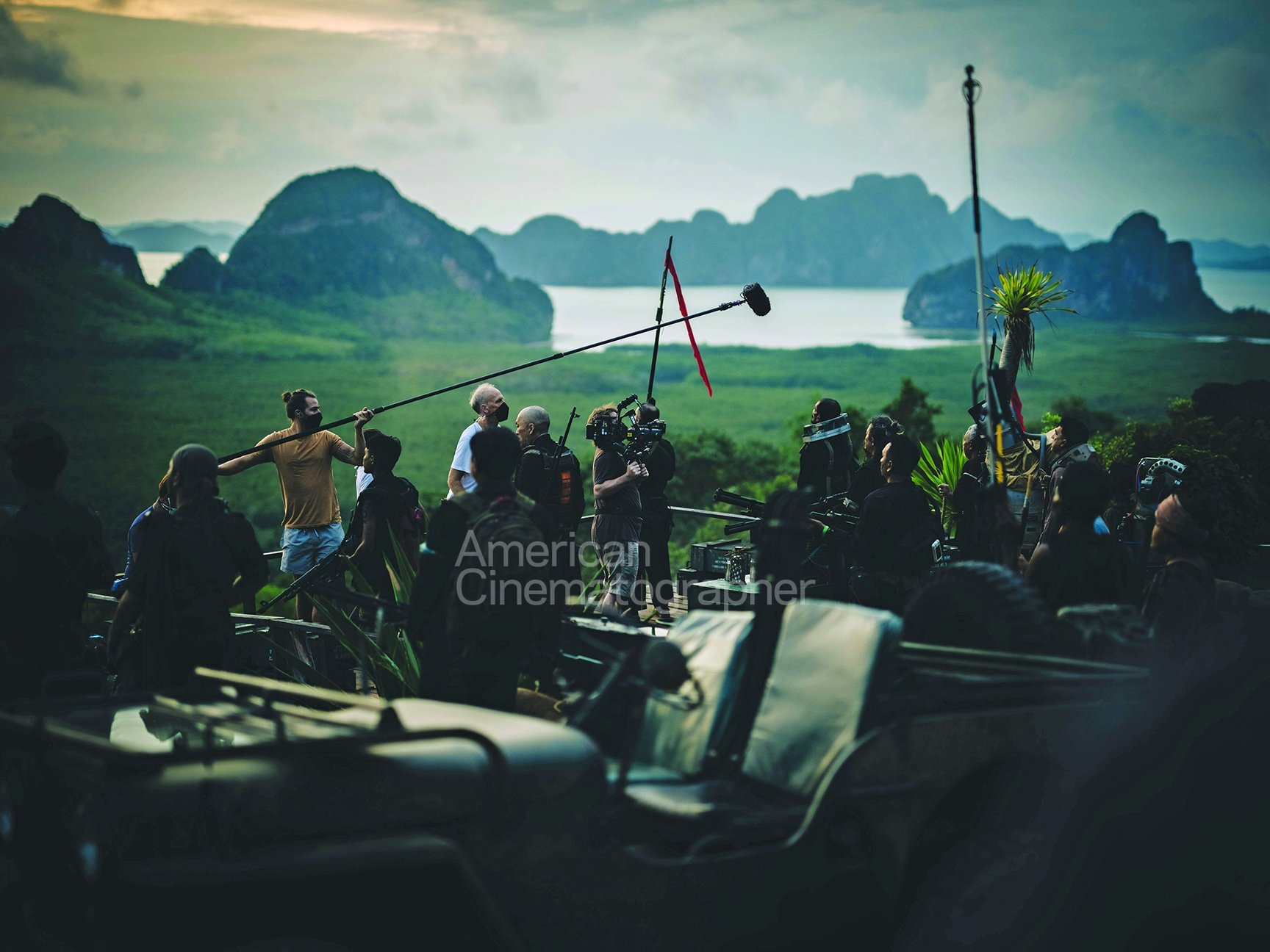
“We looked like a student film half the time — just this small crew with this tiny prosumer camera,” director Gareth Edwards says with a laugh. “We had a scene in Thailand with Gemma Chan running down this beach, and by the time we got to it, most of the Covid restrictions had opened, and the beach was full of tourists. I thought there was no way we could do it, but no one really paid attention to us at all. That scene has all these tourists in the shots, but it didn’t matter because we were so small.”
“There are realities to a sci-fi production of this size and scope — with props, costumes, extras and stunts — and you need a support system for that,” co-cinematographer Oren Soffer adds. “But there was a true indie approach to this. We kind of had the best of both worlds. We had everything that’s great about an indie film — smaller crews, practical sets, freedom — and also what’s great about bigger studio films, namely budget, time and support.
— Jay Holben
The $5 LUT

While working out the look of the film, Edwards scoured the web for LUTs to use with the Sony ILME-FX3 camera. “I bought every single LUT on the internet — I went a little crazy with it,” he says. “Then I did the ‘Pepsi Challenge,’ where I tried out every LUT and took that footage to FotoKem, where our colorist, Dave Cole, worked with them. The one I really loved was a $5 LUT that felt a bit like some 1970s film stock. It had a kind of retro feel that I loved.
“The final shooting LUT for the whole film that FotoKem made for us was inspired by that initial $5 LUT.”
— Jay Holben
Entirely Post VFX

Edwards also took an unorthodox approach to visual effects in The Creator. Instead of prevising and planning each VFX shot and green screening locations, Edwards shot and edited before determining which shots would have VFX and where that work would go.
For sets built onstage at Pinewood, namely those on the low-Earth-orbit NOMAD ship, the stage was ringed with 18-percent-gray screen — which was used for keying because lead actor John David Washington would be in a spacesuit with a helmet, and green- or bluescreen spill and reflections would have to be cleaned up later. If greenscreen was required for an individual shot, then the RGB units lighting the gray could be turned to green for that section of the screen — behind the subject — leaving everything else gray.

Some work was also completed on an LED-wall OSVP volume; an escape-pod hatch and a biosphere from the NOMAD space complex were both created mostly virtually in Unreal Engine. The filmmakers turned to Sony PXW-FX9 cameras to shoot these sequences as their primary ILME-FX3 units lack the genlock-sync capability needed to sync with the refresh frequency of the LED panels.
“The FX9 was the closest we could get to the FX3 that had genlock and maintained the same look,” Soffer says. “We did a bit of testing with ILM and FotoKem to ensure we’d maintain the look for the five days we shot on an LED volume.”
— Jay Holben






